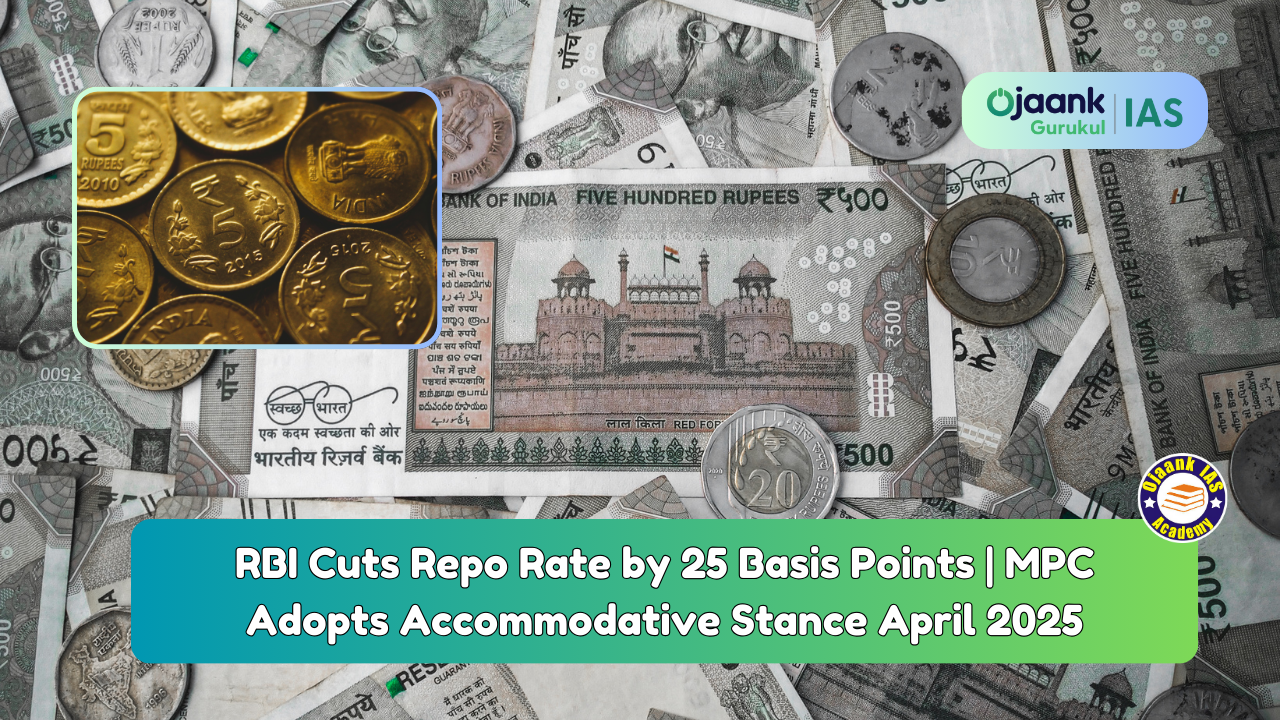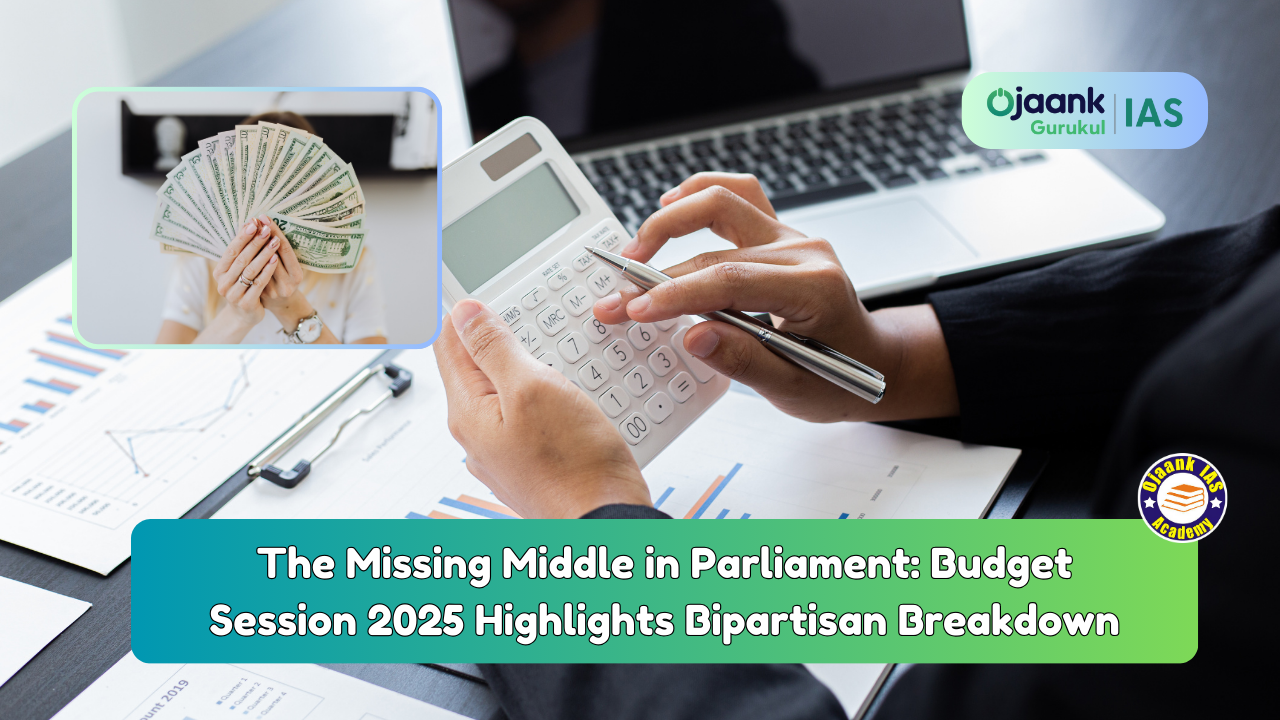todays current affairs 25th september 2023
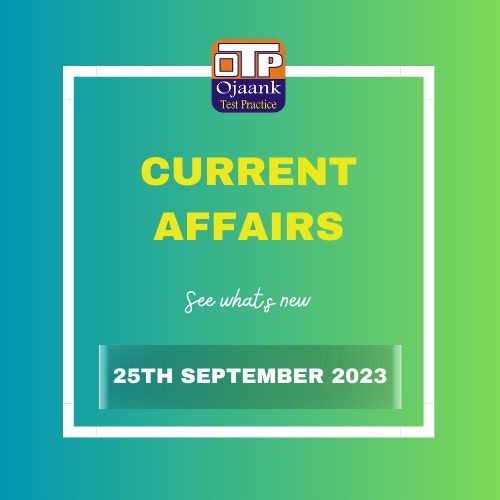
Caste-based Separate Electorates
GS Paper I (Modern Indian History)
Context: Fasting was a powerful tactic that Mahatma Gandhi utilised to push for change during India's war for independence. He used it as a sort of personal penance as well as a way to put pressure on the British government to comply with his requests.
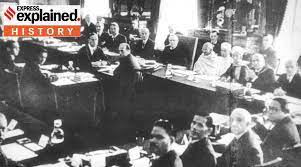
The Gandhi-Ambedkar Debate:
Gandhi began a hunger strike behind the walls of the Yerawada Central Jail in Pune in September 1932 to protest the concept of separate electorates for the harijans (lower castes). He engaged in a heated argument with B.R. Ambedkar, another well-known politician, as a result of this conduct.
The "Gandhi-Ambedkar debate" centred on their divergent caste ideologies and eventually affected India's current reservation system.
Gandhi’s Changing Views on Caste:
Gandhi's early views on caste were traditional; he supported laws on inter-caste meals and marriage. He saw caste as a fundamental component of Hinduism.
Gandhi's opinions changed as he rose to prominence in India's liberation fight. He supported unity and opposed untouchability, referring to untouchables as "harijans" or children of God. He was somewhat influenced by the burgeoning Dalit movement.
In 1936, Gandhi stated, "I do know that it [untouchability] is harmful to both spiritual and national good."
Ambedkar’s Radical Views on Caste:
Gandhi's views were less extreme than those of B.R. Ambedkar. He thought that change alone wouldn't end decades of prejudice. He maintained that the oppressed themselves must reject their situation in order for change to occur, including the shastras' (holy books') divine sanction for maintaining caste.
Ambedkar advocated for separate electorates as a form of affirmative action and stressed that lower castes needed political power in order to solve their complaints.
In Ambedkar's idea, lower caste voters would have their own electorates so they could choose candidates from their own group in addition to those running in the main election. He thought it would give the lower castes more power.
Gandhi’s Opposition to Separate Electorates:
Gandhi argued that separate electorates did not do enough for lower castes and was hence against them. He thought that lower castes should strive to lead rather than be content with a meagre portion of seats.
Gandhi was concerned that having two electorates would further divide Hindu society and benefit British colonial rulers who took advantage of internal conflicts.
Gandhi's worries were exacerbated at the time by the escalating hostilities between Hindus and Muslims. Separate electorates for Muslims and lower castes will erode Hinduism's sense of community.
The Yerawada Fast and the Poona Pact:
Gandhi began a hunger strike in Yerawada Jail in September 1932 in protest of caste-based voting systems. He saw it as a "God-given opportunity" to donate his life in order to help the oppressed.
Ambedkar had to make a difficult choice. Given that Gandhi's demands were against to his own beliefs, giving in to them was challenging. Gandhi was under pressure, nevertheless, due to his enormous popularity and the possibility of violence against Dalits.
Ambedkar eventually signed the Poona Pact under pressure, obtaining reservations for lower castes and putting an end to the notion of separate electorates.
Legacy of the Fast:
Some people believe Gandhi's fast prevented British "divide and rule" strategies. Others saw it as compulsion, and Ambedkar was forced to agree. Ambedkar questioned Gandhi's decision not to fast in opposition to untouchability per se.
The legacy of the argument continues. Even while the Poona Pact addressed urgent challenges, it did not solve ongoing problems with political representation and caste-based societal change in India.
"The Joint Electorate is... a 'Rotten Borough' in which the Hindus get the right to nominate an untouchable to set nominally as a representative of the untouchables but really as a tool of the Hindus," Ambedkar later remarked.
Source: The Hindu
Brain-Computer Interfaces (BCIs)
GS Paper III (Science & Technology)
Context: Neuralink, Elon Musk's brain implant business, recently declared that it has moved one step closer to implanting brain implants in people.

Neuralink’s Vision:
Neuralink employs microscopic brain implants to regulate movement-related neural impulses.
These implants use a Bluetooth software to convert thoughts into actions.
Science behind Brain-Computer Interfaces (BCIs):
A small chip that is inserted into the brain is used.
This chip detects brain impulses and transmits them to an app, converting ideas into deeds.
The first step is enabling people who are paralysed to direct a computer cursor with their thoughts.
To detect brain impulses, some BCIs include hairnet-like structures loaded with sensors.
They can activate various brain regions, which has shown promise in the treatment of ailments including depression.
India’s Role in Brain Tech:
BCIs are being developed by C-DAC in India to record brain signals that indicate intents.
This project is being tested by the All India Institute of Medical Sciences.
An Indian business called BrainSight AI maps brain connections to comprehend neurological diseases.
Indian Innovations and Their Impact:
Indian BCIs, like Neuralink's, are designed to aid paralysed individuals in communicating and moving.
In addition, they could handle mental illnesses like schizophrenia.
These technologies are being tested in Indian hospitals.
Challenges Ahead:
Neuralink's invasive BCI is subject to regulations and requires a lot of data.
Moving more quickly are non-invasive BCIs.
These technologies are being actively tested and the brain is being mapped by Indian institutes.
Source: The Hindu
Nepal at UN
GS Paper II (International Relations)
Context: Pushpa Kamal Dahal, often known as "Prachanda," the prime minister of Nepal, spoke before the UN General Assembly and emphasised that his country's special peace process is about to come to an end.
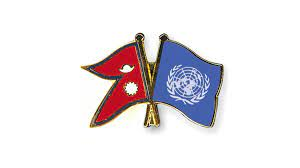
Why discuss this?
The peace process in Nepal is not without difficulties. The road to justice is made more difficult by the allegations against several Maoist leaders, including Prachanda, of grave human rights atrocities during the civil conflict from 1996 to 2006. Nepal too struggles diplomatically to maintain harmonious ties with its neighbours.
The impending trip to China by Prachanda is considered as an effort to balance Nepal's relations with China and India. His most recent trip to India improved relations with the country to the south.
In the midst of diplomatic efforts, Nepal's leaders—both in the government and the opposition—are being questioned by the public for alleged corruption. Both locally and internationally, the government's credibility has declined.
Nepal and the United States:
Prachanda was included to US worldwide watch lists as a result of his leadership during the Maoist uprising. However, because of Nepal's advantageous position, he has developed into a significant figure who supports American interests there.
Despite China's misgivings, Prachanda played a crucial role in Parliament's approval of the $500 million Millennium Challenge Corporation (MCC) Nepal compact grant in February 2022. This action boosted ties between the US and Nepal.
Since 1975, the US has supported Nepal's development, mostly through USAID. The non-alignment foreign policy of Nepal and its repercussions for relations with China, however, sparked worries from the MCC.
Navigating Relations with China:
China has the chance to expand its influence in Nepal as a result of India's 2015 economic boycott. It took part in Nepal's political process and helped bring together communist parties.
During K.P. Sharma Oli's time as prime minister, Nepal's ties with China, India, and the US changed. Nepal was granted access to northern maritime lanes and inked trade and transit agreements with China.
The epidemic briefly put a halt to China's construction initiatives in Nepal. The approval of the MCC agreement, however, changed Nepal's viewpoint on collaborations for development with China.
Prachanda and his coalition partners are wary of Chinese financing and prefer handouts to the kind of soft loans indicated in BRI agreements.
Challenges and Considerations:
Convincing China that the MCC is only a development project with no ramifications for strategy or security is the difficult part. Nepal is wary about becoming caught in a Chinese debt cycle.
Prachanda can ask China to give grants and perhaps forgive a debt acquired for the Pokhara International Airport, which at the moment doesn't have a successful operating strategy.
To offset the influence of the US and India, China wants to increase its presence, investments, and interests in Nepal. Outside of the communist parties, it may expand its political influence.
View from New Delhi:
The relationship between India and Nepal has changed throughout time, and some facets of the two countries' connections have deteriorated.
India is concerned about Nepal's open border due to possible dangers to peace, law, and order.
Concerns over the impact of powerful communist parties uniting in Nepal are shared by both India and the US. India sees a chance to cooperate with the US to control Chinese dominance in the area.
India closely monitors Prachanda's visit to China to determine how well he is received and how well he represents Nepal's views when speaking with Chinese leaders.
Conclusion:
Nepal has difficulties wrapping up its peace process and managing its diplomatic ties.
Prachanda's diplomatic efforts and the delicate balancing act between China and India are crucial factors in determining Nepal's place in the world.
Source: Indian Express
Government Bond Index-Emerging Markets (GBI-EM)
GS Paper III (Economy)
Context: JPMorgan has made a ground-breaking announcement, saying that starting in June 2024, Indian government bonds would be included in its Government Bond Index-Emerging Markets (GBI-EM).

What is Government Bond Index-Emerging Markets (GBI-EM)?
Definition An index that tracks the performance of government bonds issued by emerging market countries.
It reflects the returns of local-currency-denominated sovereign bonds.
Purpose To provide a benchmark for measuring the performance of emerging market government bonds, helping investors assess the attractiveness of these bonds for investment.
Issuer J.P. Morgan
Components Includes government bonds issued by various emerging market countries.
The composition may change over time based on eligibility criteria.
Coverage Covers a broad range of emerging market countries and their local currency government bonds.
Different GBI-EM indices may have specific regional or maturity focuses.
Currency Denominated in the local currencies of the respective emerging market countries.
India’s inclusion in GBI-EM:
India was first taken into account for inclusion in international indices in 2013. Progress was hampered by restrictions on foreign investment in domestic debt.
The Reserve Bank of India launched a limited number of securities through the "fully accessible route" (FAR) in April 2020, making them eligible for inclusion in international indices.
According to JPMorgan, there are currently 23 Indian Government Bonds (IGBs) that satisfy the index eligibility requirements, totaling $330 billion in notional value.
A sizable majority—roughly 73% of benchmarked investors—voted in favour of India's inclusion in the index.
Source: Indian Express
Facts for Prelims
Personality Rights (PRs):
An ex-parte omnibus injunction prohibiting organisations from exploiting a celebrity's PRs was granted by the Delhi High Court.
Ex-parte injunctions are when a party receives relief without hearing the other side.
An order issued prohibiting any unlawful use, even those not specifically named in the plea agreement, is known as an omnibus injunction.
PRs relate to the name, voice, signature, visuals, or any other attribute that the general public can quickly recognise as being a characteristic of a celebrity.
The only person who has the right to profit commercially from these distinctive qualities is the owner or originator of such features.
The right to privacy and the right to property both cover PRs, while neither is officially recognised in an Indian legislation.
Artificial Reef (AR):
As part of the Pradhan Mantri Matsya Sampada Yojana, the Department of Fisheries is pushing AR to revive coastal fisheries.
Technology-based treatments known as ARs are used to manage aquatic resources, including habitat enhancement, boost productivity, and restore or improve natural ecosystems.
Benefits include reducing wave damage to coastlines, promoting marine ecosystem regeneration, and serving as a carbon sink.
Increase ecotourism, recreational fishing, diving-friendly locations, and conflict reduction.
Limits bottom trawling at close proximity to the coast.
Pterygotrigla Intermedica:
An entirely new species of saltwater fish has been found in West Bengal by scientists from the Indian Zoological Survey.
The Triglidae family includes the newly discovered species, sometimes referred to as gurnards or sea-robins. There are 178 species in the Triglidae family worldwide.
They have a small cleithral spine in addition to a very long and thin opercular spine.
A unique pectoral-fin with black membranes on the inner side, a white posterior border, and three tiny white dots basally in the fin are some of its distinguishing features.
Copyright 2022 power by Ojaank Ias


